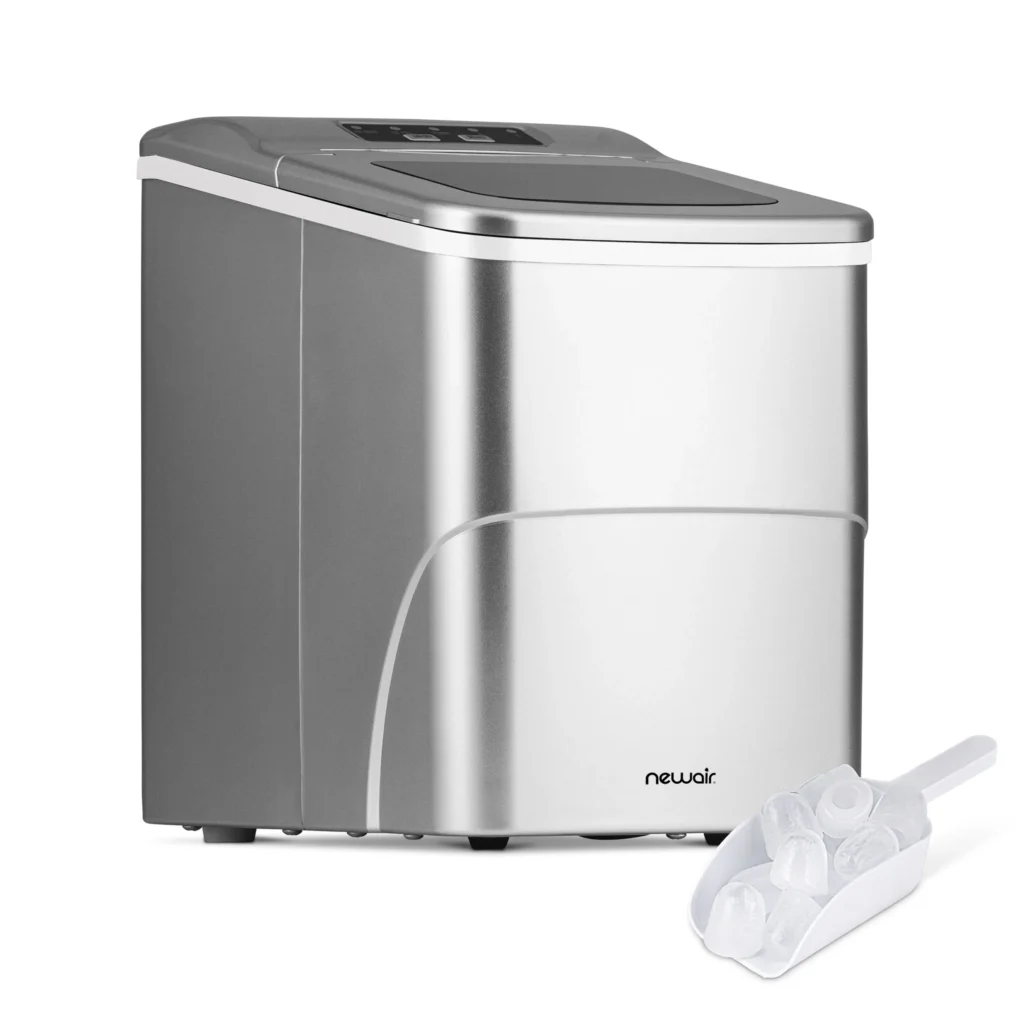Newair Portable Ice Maker Troubleshooting | 8 Easy Steps
The NewAir Portable Ice Maker efficiently produces nine ice cubes every eight minutes, totaling up to 26 lbs of ice daily. It allows users to choose between small and large ice cubes, making it a quick and convenient alternative to traditional ice trays. However, some users may encounter issues and have questions about troubleshooting.

Common Problems and Solutions
Here’s a quick overview of typical issues with the NewAir Portable Ice Maker and their solutions:
| Problem | Possible Cause | Solution |
|---|---|---|
| “Add Water” indicator is on | Low water level; high ambient/water temperature | Turn off the unit, refill the tank with cold water, and turn it back on. |
| Ice cubes stick together | Long ice-making cycle; large evaporator rods | Stop the unit, let the ice melt, and restart. |
| “Ice Full” indicator is on | Ice basket is full | Remove ice from the basket. |
| Ice is full but the light is off | Infrared sensor blocked by light | Relocate the ice maker away from direct light. |
| Normal cycle but no ice | High water temperature; refrigerant leak; blockage in cooling system | Ensure the ice maker is in a cool environment and refill with cold water. Contact customer service if issues persist. |
How Does a Portable Ice Maker Work?
Portable ice makers are gaining popularity for their convenience. Here’s a simplified breakdown of how they operate:
- Water Reservoir: Fill the reservoir with water, serving as the source for ice.
- Water Pump: The pump moves water from the reservoir to the ice tray.
- Ice Tray or Mold: Water is distributed into compartments shaped like ice cubes.
- Cooling Mechanism: A refrigerant lowers the water temperature quickly.
- Freezing Process: Water freezes starting from the edges of the compartments.
- Harvesting Ice: The heating element loosens ice cubes from the compartments.
- Release of Ice: Ice cubes drop into the basket below.
- Sensors and Controls: Sensors monitor the ice level and pause production when the basket is full.
- Draining Excess Water: Melted ice is either collected in a reservoir or drained.
- Repeat Cycle: The process continues as long as the ice maker is on and water is available.
How to Reset the NewAir Ice Maker
Resetting your NewAir ice maker can resolve minor issues. Here’s how to do it:
- Turn off the ice maker and unplug it.
- Empty any remaining water from the reservoir and ice basket.
- Allow the ice maker to sit unplugged for 5 to 10 minutes.
- Plug the ice maker back in and turn it on.
- If applicable, follow the user manual for a factory reset.
- Check if ice production resumes.
Main Features of the NewAir Portable Ice Maker
The NewAir portable ice maker is equipped with features that enhance its usability:
- Rapid Ice Production: Produces ice cubes in just minutes.
- Compact Design: Space-saving size fits well on countertops.
- No Water Line Needed: Operates without a direct water line; just fill the reservoir.
- Customizable Ice Cube Sizes: Choose between small and large cubes.
- Portability: Lightweight and easy to move for parties or events.
- User-Friendly Controls: Intuitive controls for easy operation.
- Visual Indicators: Lights notify users when the ice basket is full or water needs refilling.
- Low Noise Operation: Runs quietly without disrupting surroundings.
- Efficient Water Usage: Minimizes waste while producing ice.
Why Isn’t My NewAir Portable Ice Maker Making Ice?
If your ice maker isn’t producing ice, check the following:
- Power Connection: Ensure it’s plugged in and the outlet works.
- Water Supply: Verify the water reservoir is filled.
- Pump Functionality: Make sure the pump is operating correctly.
- Coolant Leakage: Check for leaks in the coolant system.
- Water Leakage: Inspect for leaks within the unit.
- Temperature: Use cold or room temperature water for quicker ice production.
- Freezing Tray Issues: Look for obstructions or buildup affecting ice formation.
- Sensor Problems: Ensure sensors monitoring water levels or ice production are functioning properly.
By understanding these features and troubleshooting common issues, you can make the most of your NewAir Portable Ice Maker. If problems persist, don’t hesitate to reach out to customer support for further assistance.
Related Post’s
AGLUCKY Portable Ice Maker Troubleshooting Gudie : 6 Easy Steps
Magic Chef Ice Maker Troubleshooting | 6 Easy Steps
